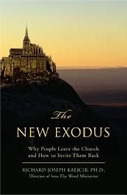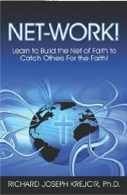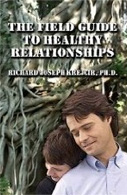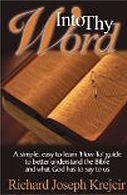Jesus is Crucified!
General Idea:
Jesus was obedient! Jesus suffered on our behalf! Jesus was handed over to Pontius Pilate for a hearing at the evil requests of the religious leaders who sought His death. So, the crucifixion of our Lord and Savior begins, the most heinous torture and death ever conceived of given to an innocent Man who is also Fully God and who takes our place both in life and in death, dying so we may live. So, on Good Friday, Jesus carries the top beam of His own cross to the place of His execution, the Skull of Golgotha; He is then lifted up in sadistic torture to please the pride of the pious, fraud hypocrites as our Perfect Sacrifice for the payment of our sins in full. He is further humiliated by being placed between two common criminals-one who will be saved and one who will chose to remain in his pride and sin. So, as the sign states, here is the "King of the Jews," lifted up in reality and into infamy as a mockery. Yet, the prideful religious leaders still objected; people looked on and mocked him and soldiers gambled for His clothes while Jesus gave out His final wishes-that His mother be taken care of and that His disciples step up to the plate of responsibility and effectual relationships that would echo down to us today and throughout eternity.
Contexts and Background
In this passage, we see that our Lord and Savior paid the ultimate price for our sins on what we now call "Good Friday." It was good because of what Christ did for our sins and soul. This is "The Passion of Christ" where Jesus validated the fulfillment of prophecy (Zech. 13:7; Luke 22:37; 24:44-46). We should have been put in His place; yet, He took our place in life, in suffering, and then in death to give us new life. Do you realize the magnitude of what our Lord did for you? He, who was without sin, covered you with His righteousness. These events took place at dawn; so, from the arrest to the crucifixion was an "all-nighter" for Jesus-a time of no rest and constant torture. (Gen. 3:18; Isa. 50:6; 52:14-53-6; Matt.27; Mark 15)!
Commentary-Word and Phrase Meanings
· Carrying / bear his own cross. This was a Roman sign of guilt as sentenced prisoners were stripped naked and then forced to carry their own torture apparatus. Here, Jesus the Innocent carries and bears our guilt of sin and covers us with His blood. Jesus was carrying the heavy patibulum (crossbeam) of the palus (the pole of the cross that was usually planted in the ground). Church tradition tells that after He fell to His knees under the weight of this burden, the Roman soldiers enlisted Simon of Cyrene's help; now, Jesus carries all of our burdens! Even in a state of severe trauma and shock, He did not allow His Divinity to override His physical stamina. Keep in mind-Jesus was a "man's man," very fit as a carpenter in a time of no power tools, and was always walking. He would have been in top-notch physical condition. He was no weakling, as some have suggested! Also, remember that most other victims of crucifixion, including the other criminals beside Him, did not go through lashings and torture prior to their crucifixion to the extent that Jesus did. To crucify someone with only the beating beforehand would allow the victim to last several days on the cross versus a few hours, because the person would be too exhausted to breathe. In order to take a breath, you had to lift yourself up as you were literally pinned in. Keep in mind as Jesus did this, He did it for you (Matt. 27:32-33)!
· The Skull... Golgotha. This was outside of the city wall, as it was custom that official capital crimes for Jews and Romans be executed outside of the city. It was a 650 yard journey from the Fortress of Antonia to Golgotha. Matthew and Luke record that Jesus was unable to carry the load due to the severe beatings He had endured, so Simon was drafted to do so, a common Roman practice to enlist help. This procession had the "contubernium" of eight, the floggers, soldiers, executioner, and city officials, in addition to the victim/criminal, carrying the crossbeam. Beside the road, watching, would have been the families, friends, and all the towns people, either enjoying or being terrified by the show. After the procession, the victim was nailed to the crossbeam. His arms may have been tied down, also. Then the person, attached to the crossbeam, was lifted, and the crossbeam was placed in the notched cutout toward the top of the pike part of the cross, and then tied in. Now, we have our quintessential Easter scene, the end of the Passion of our Lord and the beginning of His saving grace extended to us (Lev. 24:14-23; Num. 15:56-36; Deut. 17:5; 21:19-21; 22:24; Mark 15:21; Luke 4:29; Acts 7:58; Heb. 13:12).
· Crucified him. Jesus was nailed onto the crossbeam, through His wrists (not hands because the person would easily slipped off the cross), with large, heavy, square, wrought iron nails approximately the size of railroad spikes. These spikes were driven through the body and deep into the wood of the cross. Several soldiers, using large wooden forks, ladders, or ropes, lifted him up to the top of the ten foot pole. The sensation and pain of these spikes being driven through would have been indescribable. The soldiers would have been careful not to pull the arms tightly, but allow them some movement. The crossbeam was placed in the notch, and tied. Then His left foot was pressed backward against a block (suppedanium in Latin) used as a sadistic, foot-transfixion rest, to prolong the crucifixion. Then, with knees extended, feet on top of each another, toes facing down, one spike was used to nail through the arches of His feet into the bottom block. The knees were left bent so they could flex. During this incredible agony, the pain would be overwhelming, causing Jesus to slip in and out of consciousness, another type and shadow as the Passover lambs being slaughtered during this time were hung up on wood pikes with iron hooks and then filleted (Matt. 27: 27- 44).
· With him two others / two robbers. A fulfillment of prophecy from Isaiah. The word used here is the same word Josephus used for revolutionaries. It may have referred to men who initiated a rebellion rather than to common criminals. They probably were Barabbas' co-conspirators, as regular criminals were not executed this way; it took too much time and resources. Matthew records that they hurled their insults at Him. Jesus could have answered the blasphemers, come down from the cross, and showed them His omnipotence. But, for our benefit, He stayed nailed to the cross for our sins (Isa. 53:12; Mark 15:7; Luke 22:37).
· Notice prepared / inscription / small sign. This mocking placard was nailed above His head on top of the stipes and the titulus (Latin) of the cross; this practice depicted the name of the person and his alleged crime. Jerusalem was a cosmopolitan hub and many language and people groups were there. The main languages included Greek and Latin (Roman), the most common languages throughout the Roman Empire, and Aramaic (the local language a form of Hebrew). The implied crime was a form of treason, an attempt to usurp the "Prerogatives" (the emperor or the officials) of Rome, indicating the royalty or even priests who brought the charge to Pilate. This came from the prison where the accused one had been imprisoned, and was also carried on a staff in front of the procession. This sign was later nailed to the top of cross above the victim's head so it was in plain sight. The Romans were very good at promoting this and using it as a deterrent to future crimes and insurrections.
· JESUS OF NAZARETH, THE KING OF THE JEWS. This was the ultimate irony as He was and is King of the Jews as well as King of the universe! However, Pilate was not mocking Jesus. Rather, it came from the religious leaders (John 3:14; 8:24; 11:50-51)!
· Jews protested. They sought His death with contempt and not for truth! Just as Jeremiah was in the sphere of false testimony and manipulating, corrupt judges, so is our Lord (Jer. 26:7-9)!
· I have written. Almost a confession of faith; however, Pilate did not like to cooperate and was possibly deliberately offending them out of spite while still not taking responsibility. But, with this statement, his accusers and manipulators had no basis for a case against him to Tiberius. This proclamation would have greatly angered the Jewish leaders.
· Took his clothes, dividing them. This was possibly only His loincloth that alludes to a high priest's garment, as Jesus is our High Priest (Lev. 21:10; Psalm 22:18; Zach. 9:9; Matt. 21:4-7; Heb. 4:14-16).
· Undergarment / tunic/ coat. A valuable and expensive to make undergarment that kept people cool in summer, warm in winter, and made the even more valuable outer clothes last longer. It would go from neck to knees or ankles and was made from thin, fine linen, which most people had or sought. By this, they further humiliated our Lord (Psalm 22:18).
· Decide by lot. This was a form of gambling similar to dice (Psalm 22:18). The act shows an economic loss to Jesus, as clothes back then were one of the biggest investments. This was also a fulfillment of prophecy (Psalm 22:18; John 12:37-40; 19:23-24).
· Scripture might be fulfilled. Most of this passage is a fulfillment of Psalm 22.
· Mother. Jesus makes a moral pact, called a "testament" back then, with John and His family to care for one another. "Women/woman" was a very kind and effectual address then and they fulfilled a precious example of love, care, and obedience in interpersonal relationships and what the Church is called to. Mary would have been in her late forties and would have had no source of income or even prospects of same; Jesus, as the oldest, held the responsibility for her care (Ex. 20:12; Deut. 5:16; 1 Sam. 22:3; Luke 23:34-43; John 2:4; 13:34-35; 15:12; Rom. 12:10; Gal. 6:2; Eph. 4:32; Col. 3:16).
· Mother's sister, Mary the wife of Clopas. Also called Cleopas, and we will see them at Jesus' burial and resurrection (Matt. 18:1; 27:61; Mark 15:47; 16:1; Luke 8:2-3; 24:18).
· Disciple whom he loved. Referring to John the human instrument / author of this Gospel. This was a statement of humility, affection, and honor, as Jesus gave this Disciple such a precious role to take care of His mother and the coveted position that he would later earn by his service to Jesus' mother and to the Christian community (John 13:23-24; 19:26; 20:2; 21:7-20).
· I am thirsty. Refers to Psalm 69:21; most of this passage follows Psalm 22.
· Wine vinegar / Sour wine...gall... was a drink made of alcohol and myrrh (gall is a colloquialism for myrrh) and was a pain killer (Luke 23:26). Jesus refused this cup so to take on all of the suffering (Psalm 69:21; Matt. 26:29; Mark 15:23, 36). (Church legend states this was the myrrh given to Jesus as a baby, but there is no Scriptural support for this.) This offering of the gall may also been a form of mockery, as the taste was horrible and would not have quenched His incredible thirst (Psalm 69:21).
· Stalk of the hyssop. It was used as a sprayer, and was a common weed there. It held a little liquid and was used to sprinkle blood in rituals, including the original Passover. This could perhaps be a play on words in the Greek with Javelin in the next passage, referring the bitter herb used in Passover to symbolize the bitterness of our sin of suffering and then the cleansing from the lamb's blood that symbolized the future Son of God-now being fulfilled (Ex. 12:22; 1 Kings 4:33; Psalm 51:2-7)
· It is finished. Meaning the debt has been paid; there is no longer a penalty for sin. Jesus voluntarily, by His act of self sacrifice and will, paid it in full for us-the undeserving! The worst tribulation a person could ever face, the great pain Jesus endured of taking on sin and appeasing God's wrath, is now over as Jesus is about to die. He summoned the remnants of His energy to again press His torn feet against the spike and straighten His legs to take a deep breath so to utter His last and final cry, perhaps no more than an agonized whisper, "It is finished," and "Father! Into thy hands I commit myspirit / ghost." And so it was; His mission to redeem our souls was accomplished, and later proven when He arose from the grave to proclaim our call to tell the world (Isa. 53:12; Matt. 27:46-50; Mark 15:34-37; Luke 43-46; John 2:19; 10:17; Heb. 1:3; 9:11-12, 25-28).
Devotional Thoughts and Applications
When we look upon the cross as the iconic representation of our faith and the crucifixion it stands for, we have to realize it was once something quite different. It was an icon for what was, at one time, the most brutal torture ever conceived. It was a symbol of absolute terror. The Romans, who acquired the practice from the Arabians, Carthaginians, and Persians, would set these crosses up within the city limits of pre-conquered areas and randomly crucify some of their inhabitants, just to keep the others in line. Alexander the Great practiced this because it made the rest of an area to be in fear, thus easily conquerable. The Romans saw this as a good idea then took it and even improved it. Subsequently, they instituted the same practice and used it against non-Roman people accused of a crime for capital offences. It was most effective!
He dealt with our sin here and all the way to the cross; we are to receive His grace and continue to look to Him to do away with our sin-not look to ourselves or to circumstances. If not, even if pride does not get us, compromise will! It will take over our integrity and we will lose. Look to Him! Look to the acceptance of the God of the universe and the loving community of the Church, which we can enjoy so we do not need to partake of the world when we have so much more. We cannot seek virtue unless we deal with sin; we cannot grow in Him unless we deal with sin; so-deal with your sin! If you do not, pride, selfishness, and hate will win out and you will lose in your faith formation and in your testimony to others!
The Essential Inductive Questions (for more Inductive questions see Inductive Bible Study):
1. What does this passage say?
2. What does this passage mean?
3. What is God telling me?
4. How am I encouraged and strengthened?
5. Is there sin in my life for which confession and repentance is needed?
6. How can I be changed, so I can learn and grow?
7. What is in the way of these precepts affecting me? What is in the way of my listening to God?
8. How does this apply to me? What will I do about it?
9. What can I model and teach?
10. What does God want me to share with someone?
Additional Questions:
1. Besides Jesus, whose death or assassination has most affected you? Why?
2. Read Psalm 22, and then reread this passage; what do you see?
3. Do you realize the magnitude of what our Lord did for you? He, who was without sin, covered you with His righteousness.
4. How did the cross go from being a symbol of torture and punishment to an enduring icon of redemption and love?
5. Why is the cross pivotal for the real Christian faith? What would your life be like without it? What would your life be like with more understanding of it?
6. Why do you suppose the placard was nailed above His head? How do you think Jesus felt to see the soldiers gambling at His feet as He suffered?
7. The agony and the pain Jesus was in would be overwhelming, causing Him to slip in and out of consciousness. How does this affect your faith and walk in Him?
8. Jesus walked up to the cross and endured it when He could have easily walked away. How is the stamina of our Lord enough to take you through "thick and thin?"
9. Why is it to our benefit that Jesus stayed nailed to the cross for our sins? How do you feel about the fact that Jesus took your place in punishment for your sin?
10. How do you suppose most Christians you know would react to fully understanding that our Lord and Savior endured tremendous physical suffering on their behalf? What about you?
11. What does it mean to you that your debt of sin has been paid and that you no longer owe a penalty or sacrifice for your sin? Keep in mind that as Jesus did this, He did it for you! What does this mean to you?
12. Jesus chose to endure through the most heinous suffering a person could experience. How does this affect you? What can you do to be appreciative of our Lord? How will this affect the way you live your life and treat others?
© 2011, R. J. Krejcir Ph.D. Into Thy Word Ministries www.intothyword.org/
For more insights see The Crucifixion of Jesus!













